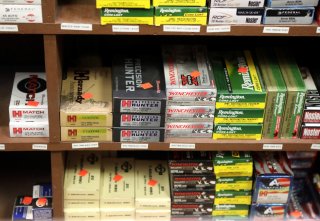What Trends Can We Expect in the Global Ammo Market?
The market is going green, for one.
The global small caliber ammunition market is expected to see a significant increase by the end of the decade, reaching $9.35 billion in 2028, and registering a revenue compound annual growth rate (CAGR) of 2.3 percent during the forecast period. According to new data from Emergen Research, increased spending in military modernization programs in emerging countries for training of soldiers, as well as the growing participation of people in hunting and sport shooting activities, and the rising emphasis on personal safety were among the major factors that were seen to be driving the small caliber ammunition market revenue growth.
Various countries including Germany, France, India, China, and Russia were escalating defense expenditure to enhance their military capabilities. This has resulted in increased defense investments, which had included the procurement of advanced weapons and ammunition. Small-caliber ammunition companies are now developing more innovative products that will meet small-caliber ammunition requirements in a more cost-effective manner.
7.62mm Projected to Increase
The Emergen Research report projected that the 7.62mm segment is expected to register the largest revenue share during the forecast period. The 7.62mm caliber is used in short and long-range firearms including medium machine guns, handguns, and shorter-range sniper rifles.
The 9mm segment is also expected to register a significantly large increase in revenue share during the forecast period owing to its reduced gun recoil, which could make it easier for shooters to handle. Military and law enforcement agencies globally have continued to adopt the 9mm cartridge due to greater magazine capacity and improved performance.
The new report didn't note where the U.S. military's new 6.8mm caliber will fit into the big picture, however. It was developed as a compromise to include the virtues of both the 5.56 and 7.62 rounds.
Green Ammo
The research study also found that advancements in technologies, including the introduction of environmentally friendly "green ammunition," could positively impact the growth of the small caliber ammunition market. While the ammunition is still meant to be lethal when used against an adversary, the adoption of green bullets could reduce contamination of shooting grounds and potentially help eliminate health hazards caused by lead bullets.
Last year, the European Union made a historic decision to ban the use of lead shot for hunting in wetlands, while Denmark, Sweden, and Germany now have a total ban on lead ammunition. Calls for similar bans have gained traction in the United States, and as of July 1, 2019, lead ammunition has been banned for hunting wildlife anywhere in California. In the Golden State, lead ammunition can only be used at gun ranges—and some have even called for it to be banned completely.
Other states such as Maine, New York, and Wisconsin have seen similar pushes to ban lead ammunition.
Additionally, on the basis of bullet type, the global small caliber ammunition market will remain segmented into lead, copper, brass, and others. The copper segment is expected to register the largest revenue share over the forecast period owing to its extremely consistent performance and lightweight features. Copper bullets are generally harder and retain better momentum at impact, and have deeper penetration power compared to other bullets.
Brass-cased cartridges are projected to remain the most popular among all materials owning to properties including its better durability.
Peter Suciu is a Michigan-based writer who has contributed to more than four dozen magazines, newspapers, and websites. He regularly writes about military small arms and is the author of several books on military headgear including A Gallery of Military Headdress, which is available on Amazon.com.
Image: Reuters

